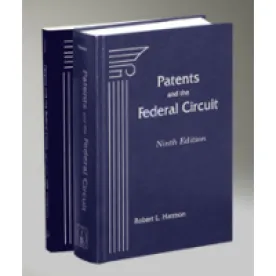Takeaway: If a claim is challenged as being anticipated by alleged prior art information under 35 U.S.C. § 102(b), but the Board finds that at best such information may only be entitled to a date that would make it prior art under 35 U.S.C. § 102(a), the Board will deny the proposed § 102(b) challenge and refrain from considering the information under § 102(a).
In its Final Written Decision, the Board held that Petitioner had demonstrated by a preponderance of the evidence that claim 1 of the ’204 patent is unpatentable as anticipated under 35 U.S.C. § 102(b) and as having been obvious under 35 U.S.C. § 103(a). Claim 1 was the only claim challenged in this particular inter partes review proceeding.
The ’204 patent relates to a system including a flush box that flushes paint from a spray gun and loads a new color into the spray gun. When a paint color change is to take place, for example, the spray gun is positioned in the flush box, a controller causes the spray gun to flush the gun with cleaning solvent, the old paint and cleaning solvent are distributed to a waste container, and the controller flushes the correct amount of solvent required to clean the gun.
The instituted grounds for this proceeding were: (1) anticipation of claim 1 under 35 U.S.C. § 102(b) by Gun Flush Box Module Instructions – Parts List 684-019; (2) anticipation of claim 1 under 35 U.S.C. § 102(b) by Graco Dual Gun Flush Box Program Listing Associated with Operation of Gun Flush Box Module; and (3) obviousness of claim 1 under 35 U.S.C. § 103(a) in view of Gun Flush Box Module Instructions – Parts List 684-019, Graco Dual Gun Flush Box Program Listing Associated with Operation of Gun Flush Box Module, and PrecisionMix® Proportioning Control Instructions – Parts List 684-029.
In its claim construction, the Board interpreted the term “responsive to” in the recitation in challenged claim 1 of a “control unit being responsive to placement of said application device in said gun flush box in order to operate said application device” as referring to a “control unit that can detect or sense when an application device is in said gun flush box.” As interpreted by the Board, the claim term “responsive to” does not mean “automatic.”
The Board denied ground (1). While Petitioner had persuasively shown that the Gun Flush Box Module Instructions – Parts List 684-019 was prior art under 35 U.S.C. § 102(a), Petitioner had not persuaded the Board that such information was prior art under 35 U.S.C. § 102(b). And since ground (1) was instituted under § 102(b) and not § 102(a), the challenge based on ground (1) was denied.
The Board did find ground (2) to be persuasive, in view of Petitioner providing a Declaration of Michael Elberson in support of its position that the information in question was prior art. In doing so, the Board noted that Patent Owner had not filed a motion to exclude the alleged prior art information or the Declaration of Mr. Elberson, and had not elected to depose Mr. Elberson.
As for ground (3), the Board was persuaded that “it would have been obvious to one of ordinary skill in the art to combine the Graco Dual Gun Flush Box systems disclosed in Exhibit 1003 with the software for the Graco Dual Gun Flush Box systems disclosed in Exhibit 1004 and with the Graco PrecisionMix® Proportioning Controller disclosed in Exhibit 1005. In reaching this conclusion, the Board noted, among other things, “that Exhibit 1005 is referenced specifically in Exhibit 1003 . . . while Exhibit 1004 references the Graco Duel Gun Flush Box product disclosed in Exhibits 1003 and 1005.”
Autoquip, Inc. v. Graco Minnesota, Inc., IPR2013-00452
Paper 18: Final Written Decision
Dated: January 14, 2015
Patent: 6,554,204 B1
Before: Brian J. McNamara, Georgianna W. Braden, and Barbara A. Parvis
Written by: Braden



 />i
/>i
